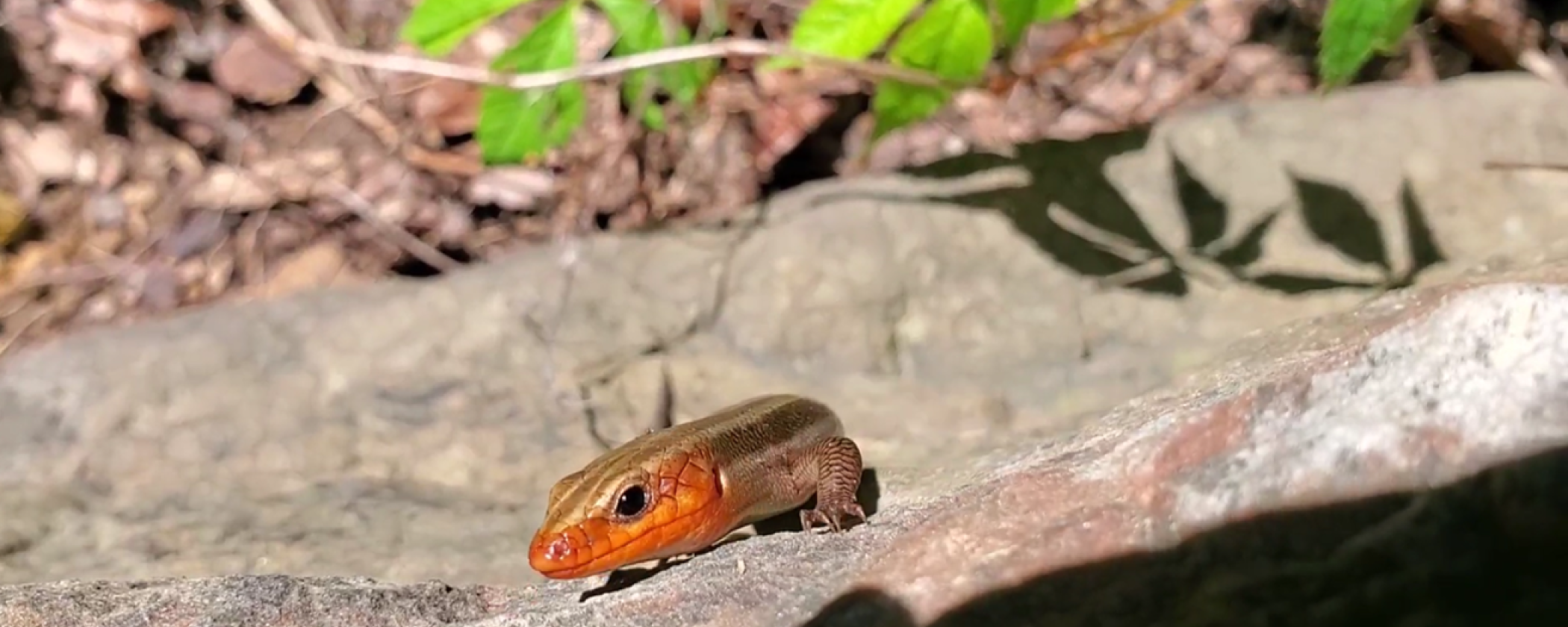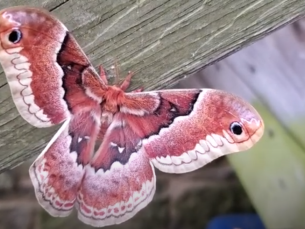
Tiny Tough Skinks: 3 Tips for Nature Observers
By: Heather JohnsonThe varied and rugged terrain of the Ozarks at Lake Fort Smith State Park in northwest Arkansas offers suitable homes for many different types of animals. Large animals like black bears, deer, and bobcats thrive in this mountainous region. The commonly known larger animals often take the spotlight away from the smaller creatures who also dwell in the area, but the smallest of creatures play just as important of a role in this environment as the large creatures do. Common reptiles like the tiny five-lined skinks (Plestiodon fasciatus) are curious and feisty pest control agents of the wild.
In the 4-minute unnarrated (no sound) video that accompanies this article, see short clips of skinks in their natural habitats and get three tips for being a more successful wildlife watcher.
You can increase your nature observer success by focusing on knowledge, patience, and curiosity!
Tip #1: Knowledge helps you understand wildlife behavior
Skinks are cold-blooded reptiles just like turtles, snakes, and lizards. Skinks are commonly confused for a lizard, but if a nature observer takes a closer look at the two, there are some subtle differences between them. The scales of a skink are glossy and smooth, whereas, the scales of a lizard are very rough and dry-looking. Notice how shiny the skinks are in the video clips!
As juveniles, five-lined skinks exhibit blackish bodies with five white lines running from head to toe, giving them their names. These young skinks also have brilliantly blue tails, a feature which serves as an adaptation to distract predators from their vital organs and head. As the skinks mature and grow to become about 8.5 inches long, their colors become dull and the blue coloration of the tails completely changes to match the color of the rest of the body. Both adult male and female five-lined skinks maintain the five whitish colored lines which run down the entire length of their brownish colored bodies. Males exhibit bright orange-colored throats and necks in the spring and summer months, a look which is appealing to the females.
Tip #2: Being patient and still can increase your nature observer success
Practice your nature observer skills: (video insert 1)
A curious male five-lined skink climbs the side of a boulder to inspect a camera that is watching his territory. Recognizing no immediate threat from his visitor, the skink quickly goes back to his foraging for tiny insects and ants crawling along the boulder and soil below.
Brushy or wooded areas with rock piles and rotting trees provide a perfect habitat for these creatures. These curious little reptiles stay busy on their tireless search for food; their small, rounded pink tongues lap up insects along the way. Did you see the tongue of the skink in this video? Menu items for skinks are anything from ants and worms to beetles and termites which makes them excellent reptiles to have around for pest control purposes. As the skinks traverse rough terrain, the needle-like claws on their toes firmly grasp the surface of rocks allowing the skinks to effortlessly climb vertical rock faces. The skink in this video has no trouble climbing the rock. Did you notice?
Tip #3: When you’re curious about nature, take notes, and challenge yourself to find out the story
Practice your nature observer skills: (video insert 2)
Two rival adult male five-lined skinks wrestle one another to fiercely protect territory. They bite each other at their heads and necks to try to toss or flip over the other, an attempt to force the rival to back down and give up the territory.
Five-lined skinks make up for their small size with their feisty attitudes. When it comes to defending territory or showing off for a female, skinks battle one another until the weaker backs down and leaves the area. The goal of these fights is to force a submission by flipping the weaker skink over. These matches last for several minutes and can go for multiple rounds depending on how desperately the skinks want the territory or the attention of a female.
Territorial battles can be quite damaging to the skinks, their tiny sandpaper-like teeth are abrasive enough to remove scales and leave scars on opponents. Occasionally these fights are violent enough that the tail of the skink breaks away from the rest of the body. But not to fear, this loss of tail is not life-threatening for the skink; rather, it is a very useful survival technique. The tail breaks away easily, allowing a quick escape from an opponent or predator and will grow back within a few weeks.
You can increase your nature observer success by focusing on knowledge, patience, and curiosity!
Conclusion: Say this statement out loud!
“I can increase my nature observer success by focusing on knowledge, patience, and curiosity!”
The small behind the scenes creatures, like five-lined skinks, have thrilling stories to share. Next time you visit Lake Fort Smith State Park or any Arkansas State Park, take the time to observe the small things and creatures…the small insects, plants, and creepy crawlies. Consider what roles they each play in their environment. Perhaps you will even get a glimpse at a hidden world full of tiny epic battles and excitement.




